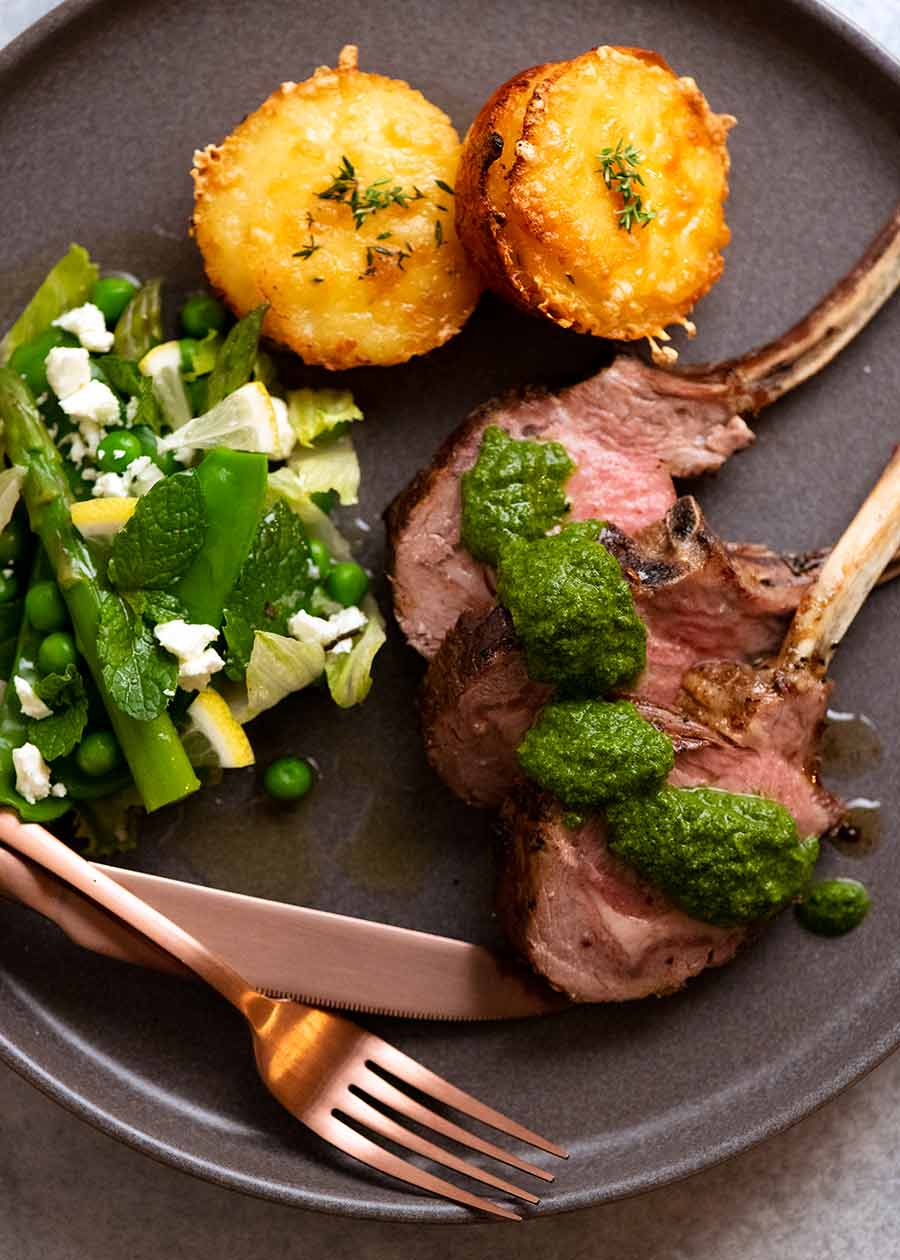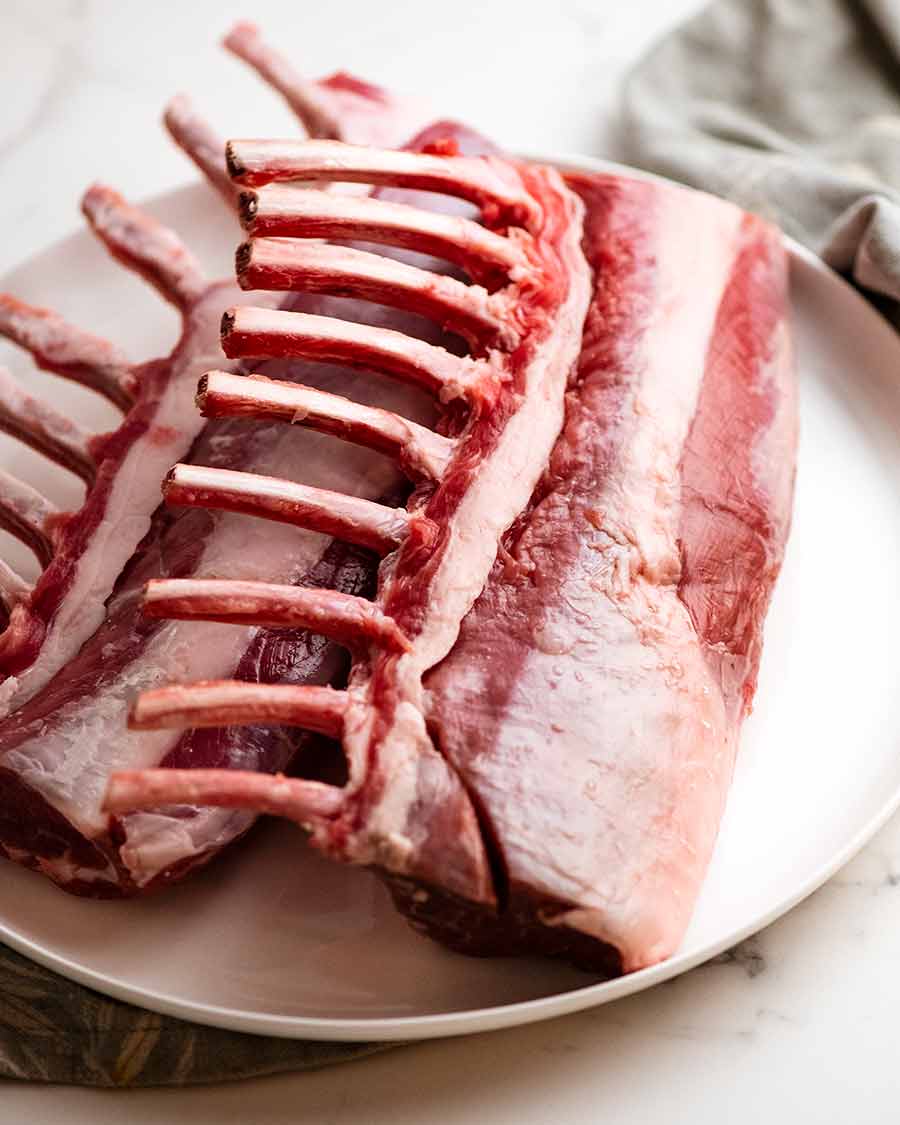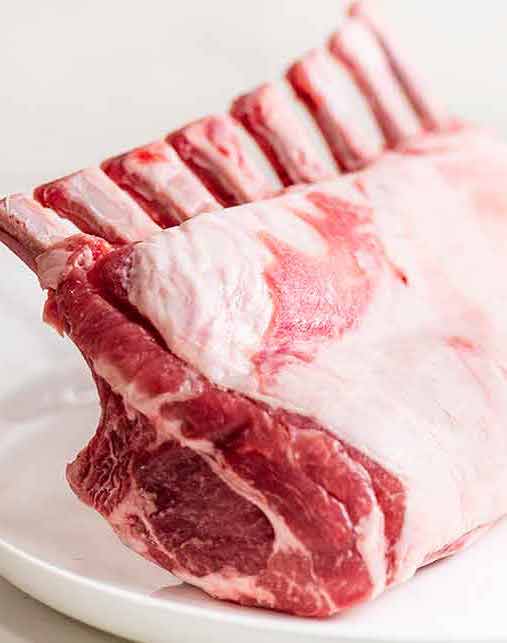This is a terrific, classic Rack of Lamb recipe that makes the most of this premium cut of meat. An assertive rosemary garlic marinade injects flavour into the meat before roasting in the oven, then finishing by basting with garlic butter. To serve, a dazzling green Salsa Verde sauce is the perfect fresh and tangy accompaniment to cut through the richness of the lamb!
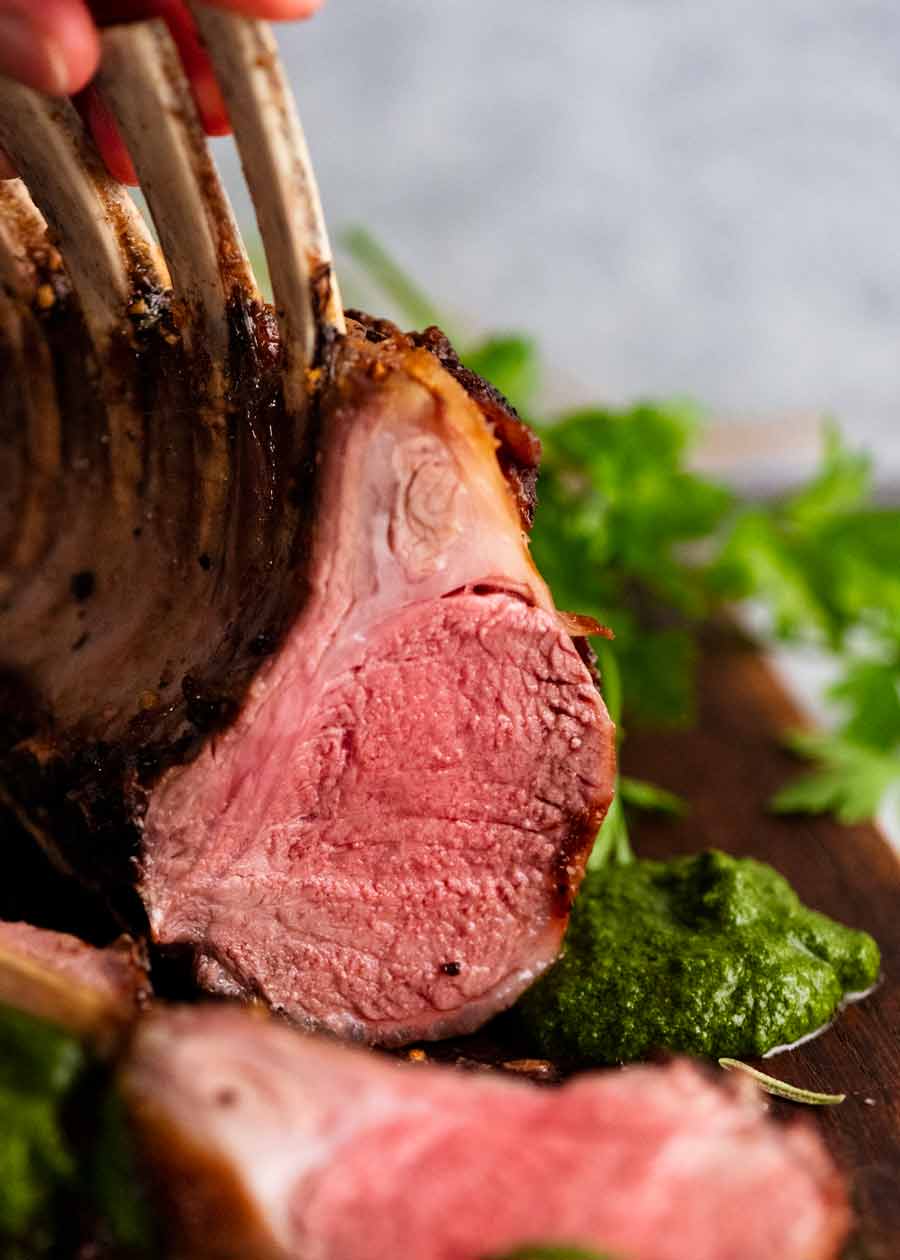
Rack of Lamb recipe
Welcome to the first recipe for Easter Week 2021! We’re kicking off with a traditional choice of meat for Easter: lamb. Not just any old lamb, though. Today we’re going for the Rolls Royce of cuts, rack of lamb!
Lamb rack is a premium cut of meat and a darling of fine dining restaurants, for good reason. The meat in a rack of lamb is amongst the most tender and juicy on the animal, while still retaining plenty of flavour.
Properly frenched (ie. trimmed for presentation), a whole rack of lamb makes for a seriously impressive centrepiece and screams luxury. If you’re wanting to turn a meal into an occasion, it’s hard to go past serving a rack of lamb to your lucky guests!
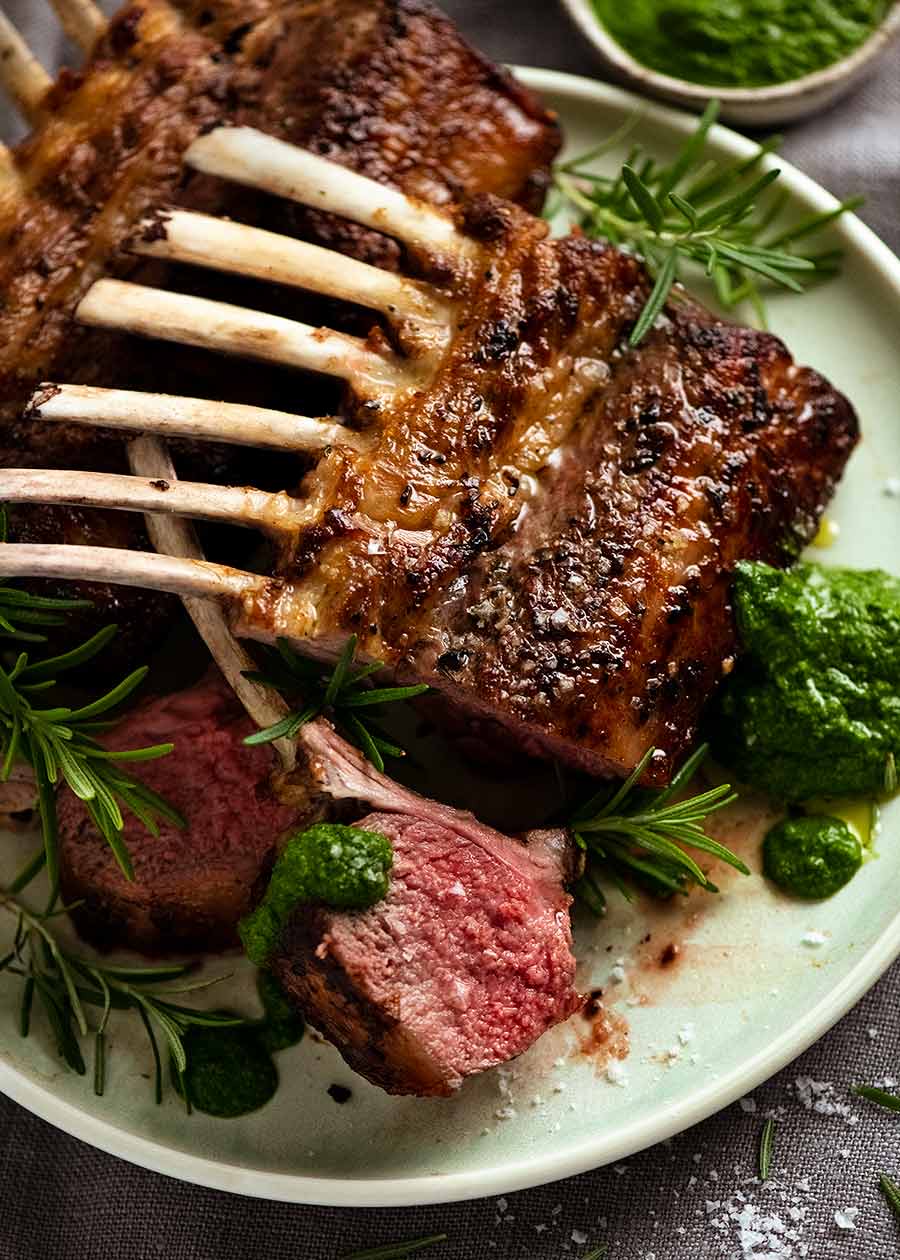
ROSEMARY GARLIC MARINADE FOR RACK OF LAMB
I believe the better the meat, the less you should do to it, to allow the meat itself to really shine. And thus today we’re going with nothing more than a very simple and classic rosemary garlic marinade, and a little butter baste to finish.
To serve, what could be more perfect to play against the richness of lamb than a fresh and zingy Salsa Verde? When you have meat this good, simple really is best!
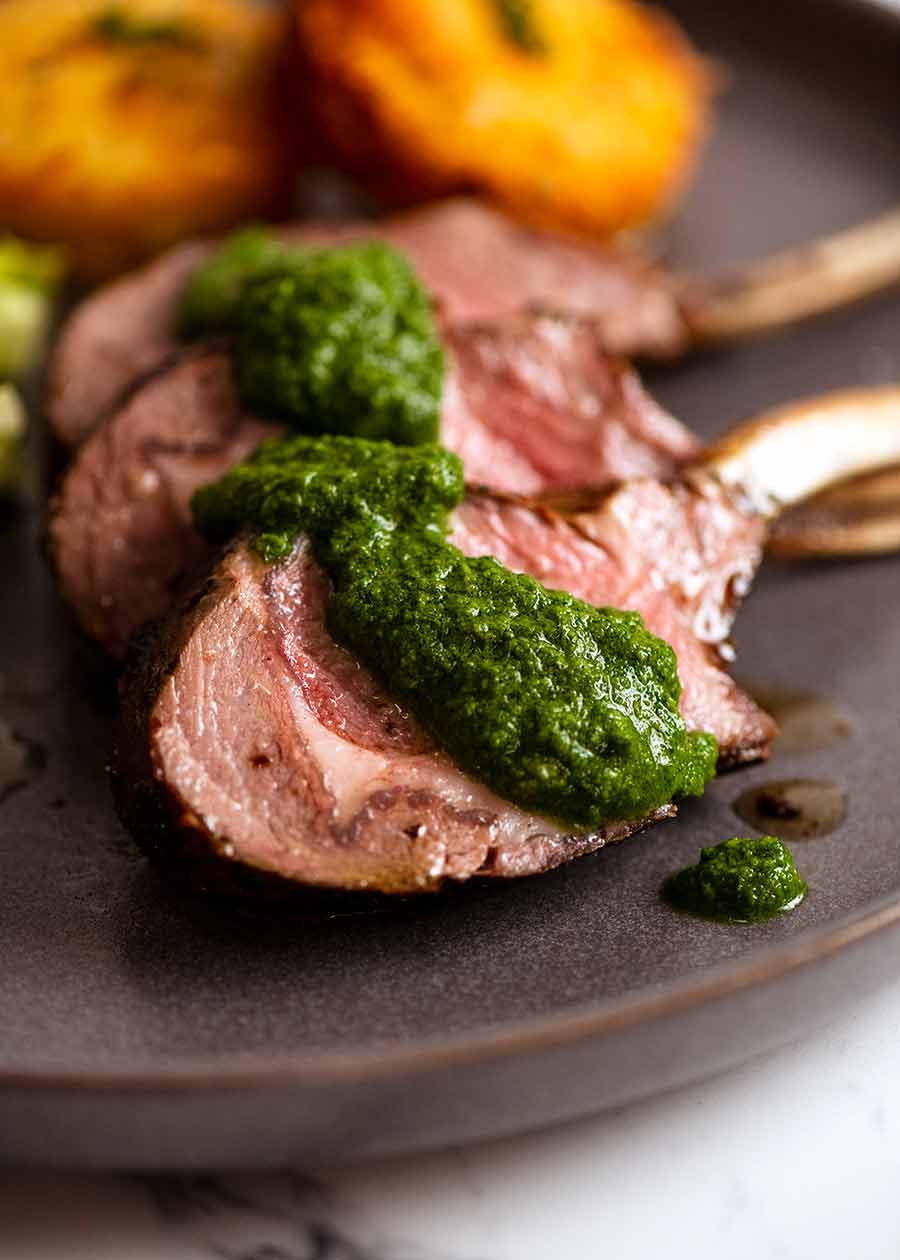
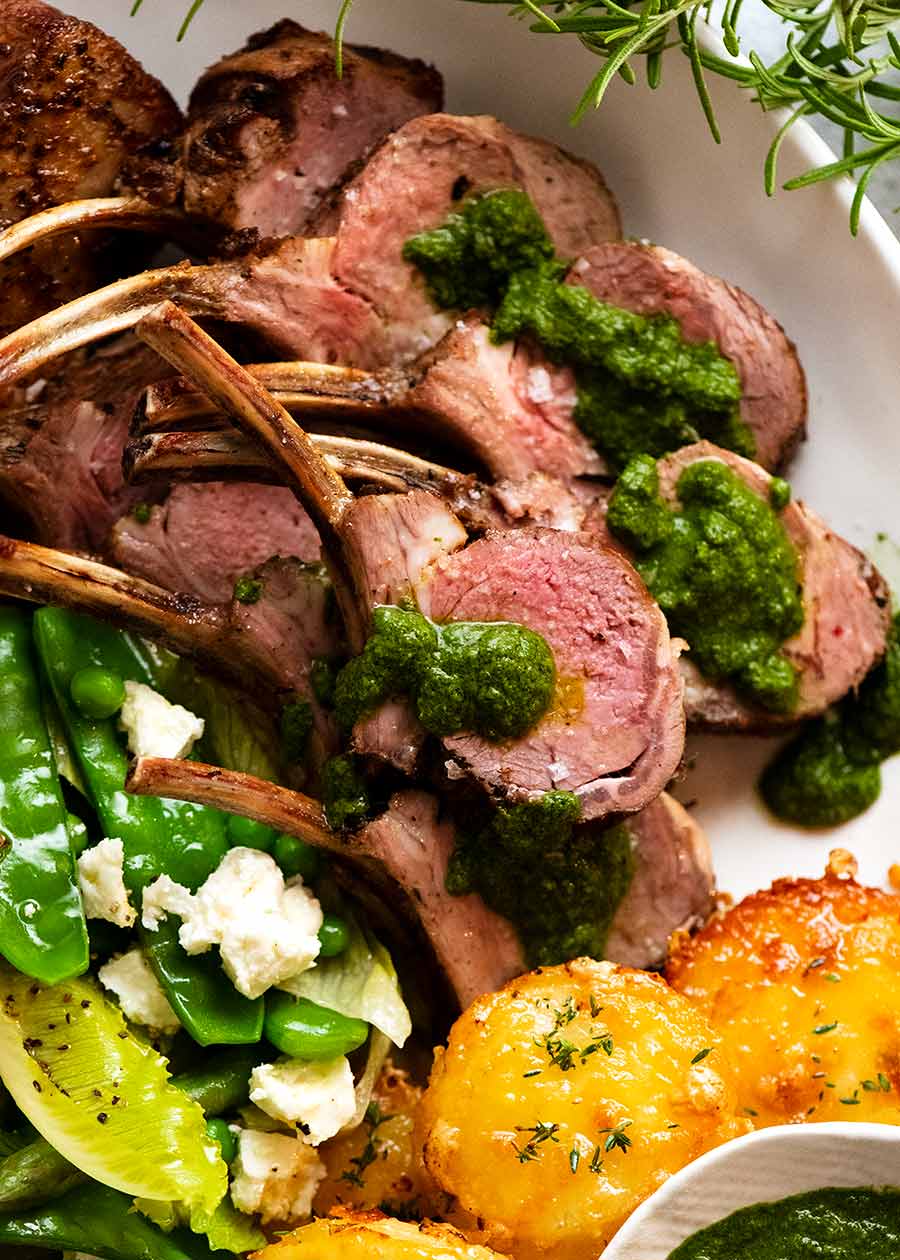
What you need to cook Rack of Lamb
Here’s what you need for this recipe:
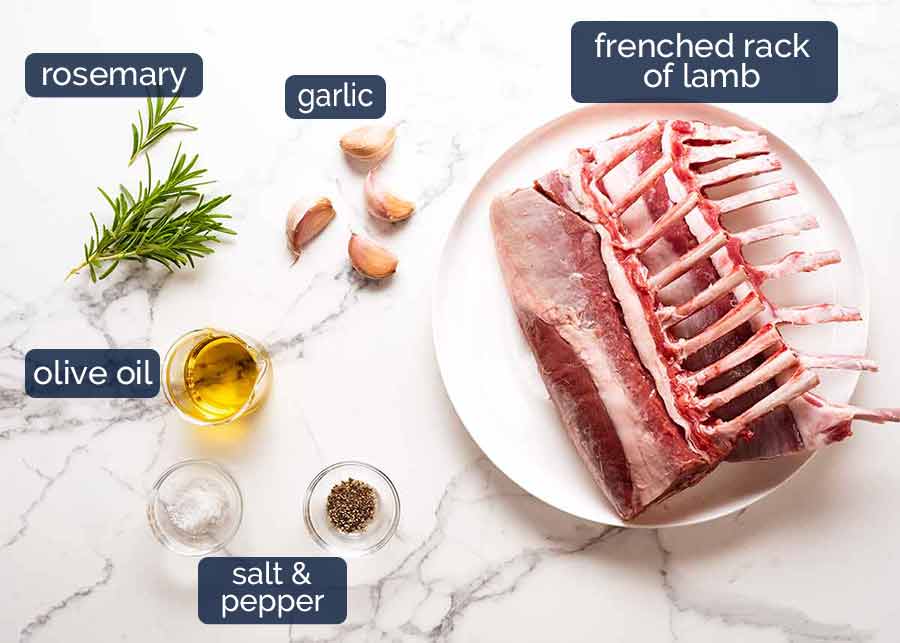
FOR THE LAMB RACK MARINADE:
-
Rosemary – Fresh rosemary is essential, for maximum effect! The classic herb to pair with lamb;
-
Garlic – Another classic flavouring for our lamb;
-
Extra virgin olive oil – The flavour carrier! Also, to keep the meat surface moist; and
-
Salt and pepper – Naturally! Also, as lamb racks are not very thick, the seasoning penetrates the lamb very well.
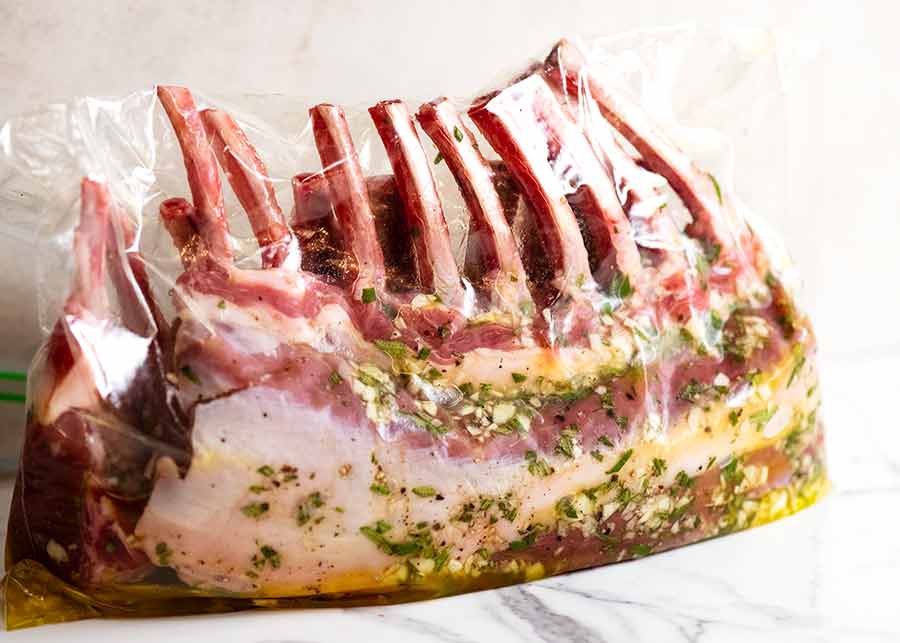
THE LAMB RACK
The lamb rack pictured above has been frenched (“a frenched rack of lamb”). This means the lamb rack has been trimmed of excess fat and the bones cleaned. Preparing the lamb rack this way is for presentation purposes so it looks neater, as well as ensuring too much fat doesn’t land on the diner’s plate. If you’re going to splurge on a premium cut of meat, this is no time to do things by halves! 🙂
To french, the fat cap is firstly trimmed from the meat. Then the meat on and between the bones are scraped clean down to where the loin meat starts (the main strip of meat).
Below is a comparison of a frenched rack of lamb (left) vs a non-frenched rack of lamb (right), and the difference is clear. Some people prefer to have the fat cap, because fat is where most of the flavour of meat is. (Fun fact: Sauté a lean beef steak in lamb fat and you’d swear you’re eating a lamb chop!)
-
![Frenched raw rack of lamb on a plate]()
Frenched rack of lamb -
![Raw rack of lamb - not frenched]()
Rack of lamb – not frenched
However the fat layer shrinks and buckles as it cooks, so it doesn’t look as neat. A frenched rack looks neat and tidy, and more worthy of both price tag and occasion!
How to cook a Rack of Lamb
This classic recipe for a rack of lamb begins with marinating the whole rack overnight. The lamb is then seared on the stove to get some colour before finishing in the oven to cook to your desired level of doneness. (*“Medium-rare, medium-rare!”, she whispers forcefully!*😉) Finally, we give the cooked rack a quick basting in butter for that professional, restaurant-like finish!
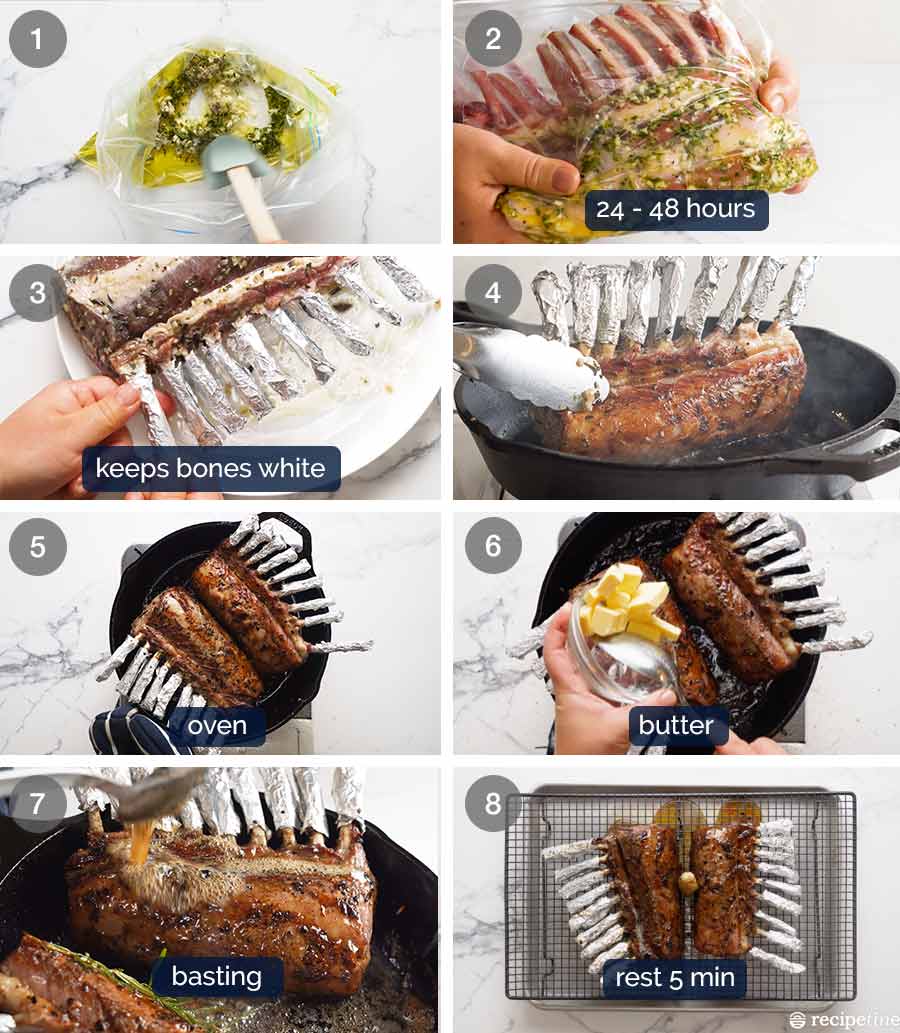
-
Make marinade – Mix the lamb marinade in a ziplock bag. I use a ziplock bag because it’s the most effective way to make a small amount of marinade stay thoroughly coated on the lamb. If you prefer to use a container, use a snug one, and increase the marinade by 50%. Turn the lamb once or twice during the marinating time;
-
Marinate the lamb for a minimum of 24 hours, though for extra flavour you can go up to 48 hours;
-
Foil-wrap bones – This is an optional step for presentation purposes. The foil stops the bones from going brown so they look nicer. A little cheffy tip!
Sometimes, butchers will sell the lamb with the bones already wrapped in foil (this is often the case with Prime Rib here in Australia);
-
Sear the lamb rack in an oven-proof skillet. We must sear the lamb before roasting to get some colour on the meat, because the roasting time is too short for the surface to get browned in the oven. And as we all know, colour = flavour!
Sear all around the meat as well as the ends. Do one rack at a time in the pan – this should take around 3 minutes each;
-
Roast in oven – Arrange both racks now in the skillet and transfer to the oven. Roast in a 180°C/350°F (fan) oven until you reach your desired level of doneness. It should take 15 minutes for 2 x 800g / 1.3lb lamb racks to reach 57°C/135°F, the target internal temperature for medium-rare. The photos in this post depict the lamb at medium-rare, and this is the point at which the lamb is fully cooked to pink perfection and for optimum juiciness. No self-respecting restaurant would suggest lamb rack be cooked beyond this! (But it’s your lamb, so if you prefer it well done, I say go for it 🙂)
-
Herb and garlic butter baste – You thought we were done? Oh no! For a piece of meat this special, let’s go all the way and finish with butter! As soon as you pull the lamb from the oven, toss some butter, smashed garlic and a sprig of rosemary into the pan. The residual heat from the skillet will melt the butter quickly. Squish the garlic and rosemary into the butter to get the flavours infused;
-
Baste, baste, baste! Once the butter has melted, baste away! This truly is the high point when cooking this recipe. The smell of freshly roasted lamb in sizzling garlicky-rosemary-butter will make you delirious. If your knees don’t buckle in the slightest, you must be made of stone!; and
-
Rest the meat – Finally, let the lamb rest for a good 5 minutes before serving. Why is resting essential? When meat is cooked the juices are squeezed from the muscle fibres. Slice the meat fresh out the oven and these juices will pour out of the meat and wind up on the cutting board instead of in your mouth! 😫 Resting the meat allows the juices to redistribute throughout the meat, making for juicier lamb.
SERVING
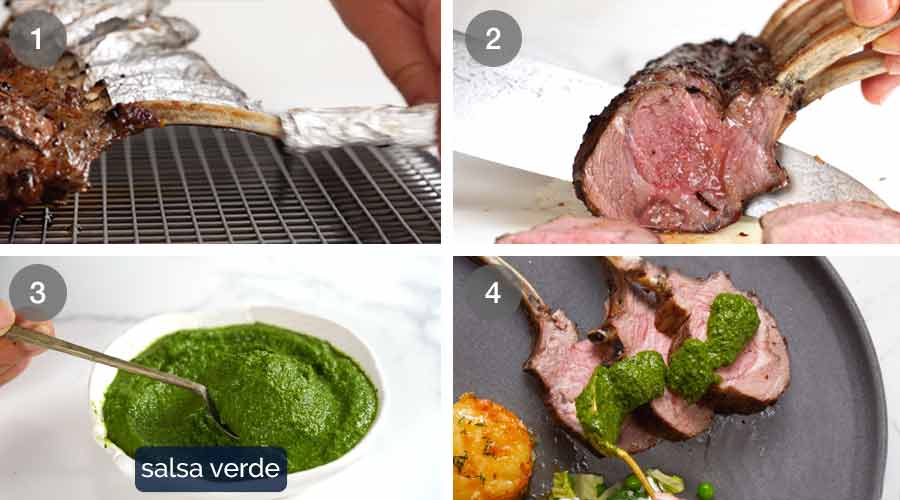
-
Remove foil – Remove the foil from the bones (if you covered them), take a step back and marvel at how lovely and white the bones are. So very fine-dining-posh!
-
Carve – Slice the lamb into cutlets. Sometimes I do single cutlets with one bone apiece, as pictured. Other times I will cut them so each piece has two bones, then put 2 pieces (ie. 4 cutlets) on each plate, which has a more generous look. Or I cut 3 or 4 bones into one mini roast. It just depends how I’m feeling on the day!
-
Sauce for Rack of Lamb – The sauce I’ve chosen for today’s lamb rack is Salsa Verde. Made with fresh herbs (parsley, mint, basil), this brilliant green sauce goes exceptionally well with lamb. The fresh, sharp and bold tastes perfectly complement the rich flavours of the lamb. It also looks fabulous with its vibrant colour and is dead easy to make (a 10 second stick blender blitz). This sauce is much less effort than other classic sauces such as say, a jus where you must make stock, reduce it, mount with butter to thicken etc.
-
Serve! Place the lamb cutlets on a plate, spoon over the Salsa Verde then serve!
